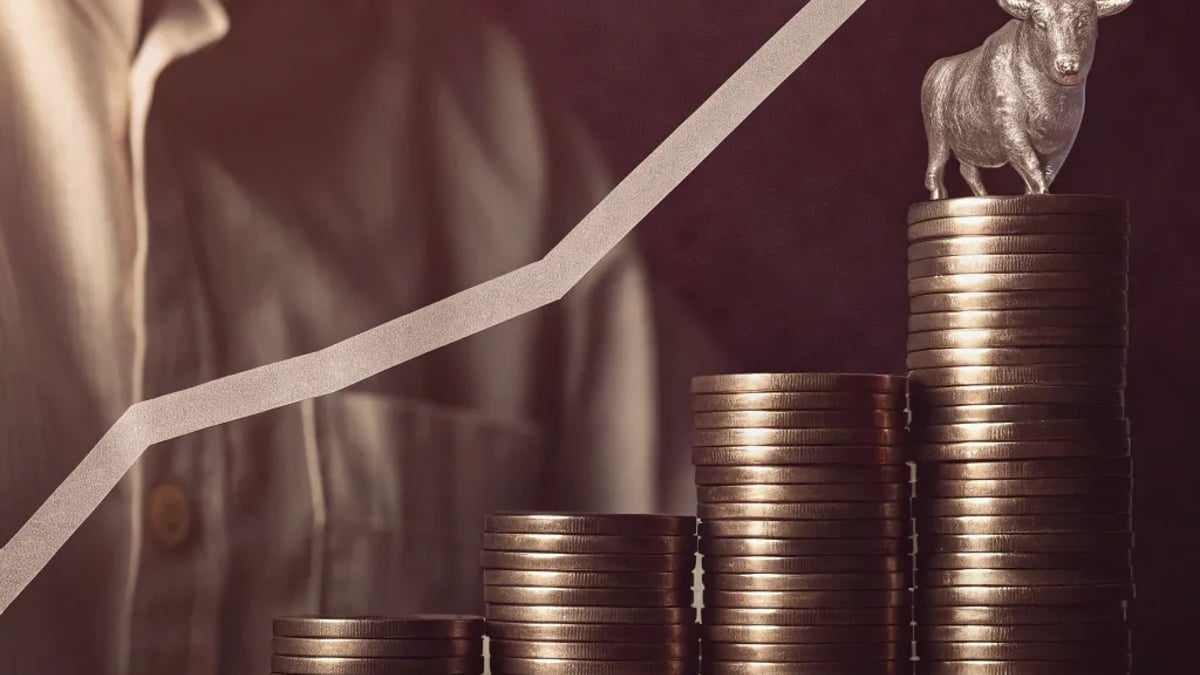
Building wealth doesn't require complex trading strategies or insider knowledge. My journey of quadrupling a modest investment through index funds wasn't overnight magic, but rather a testament to consistency, patience, and letting the market do the heavy lifting. While many seek get-rich-quick schemes, I found success through a decidedly unsexy approach that anyone with discipline can replicate.
Disclaimer: This article shares my personal experience and is for informational purposes only. This is not financial advice. Investment strategies should be tailored to your individual circumstances, goals, and risk tolerance. Past performance doesn't guarantee future results.
My Starting Point: Just $5,000 and Lots of Questions
Back in 2015, I found myself with $5,000 saved from my first real job after college. It wasn't a fortune, but it felt significant—enough that I didn't want to waste it on something forgettable, but not enough to make any dramatic life changes.
I had zero investing experience. My parents weren't investors themselves, and my financial education consisted mostly of "don't spend more than you make." I knew people made money in the stock market, but the mechanics seemed mysterious and intimidating.

After watching a colleague lose money on individual stocks they were convinced would skyrocket, I decided whatever approach I took needed to be:
- Simple enough that I wouldn't mess it up
- Diversified to avoid putting everything on one bet
- Low-maintenance since I knew I wouldn't stay consistently engaged
This led me to index funds—a decision that would ultimately turn my modest $5,000 into over $20,000.
Why I Chose Index Funds Over Other Options
When researching where to put my money, I considered several options:
- Individual stocks (too risky and time-consuming)
- Savings accounts (too little growth)
- Real estate (not enough capital)
- Cryptocurrency (too volatile for my comfort)
- Index funds (diversified, passive, historically reliable)
Index funds stood out because they offered instant diversification by tracking entire market segments rather than individual companies. I wouldn't need to research specific businesses or time the market—the fund would simply mirror the performance of hundreds or thousands of companies.
Plus, the fees were remarkably low. While actively managed mutual funds were charging 1-2% annually, many index funds charged less than 0.1%. That difference might seem small, but compounds dramatically over time.
Charlie, a financial advisor I spoke with at the time, put it bluntly: "Most professional stock pickers underperform the market over time. Why pay high fees for underperformance when you can just buy the market itself?"
The Specific Index Funds I Selected
After researching various options, I split my initial $5,000 between two primary index funds:
- Total U.S. Stock Market Index Fund (70% allocation) - This gave me exposure to companies of all sizes across all sectors in the American economy.
- Total International Stock Index Fund (30% allocation) - This provided diversification beyond U.S. borders, including developed and emerging markets.
I chose Vanguard's offerings specifically because of their reputation for low fees and because the company's unique structure means it's owned by its funds, which are owned by shareholders like me—aligning our interests.
The expense ratios were 0.04% and 0.11% respectively—practically nothing compared to the 1%+ that many actively managed funds charge.
My Investment Strategy: Boring But Effective
My approach was embarrassingly simple:
- Set up automatic monthly contributions - I started with just $200/month in addition to my initial $5,000, increasing this amount whenever I got raises.
- Implement a "set it and forget it" mindset - I deliberately avoided checking my account more than quarterly to prevent emotional reactions to market movements.
- Reinvest all dividends automatically - Rather than taking dividends as cash, I had them automatically reinvested to purchase more shares.
- Rebalance annually - Once a year, I'd adjust my allocations back to my target percentages if they had drifted significantly.
That's it. No timing the market. No jumping between hot sectors. No panic selling during downturns.
The strategy was so boring that I sometimes wondered if I was missing something. Shouldn't investing be more complicated?
The Timeline: How Long It Actually Took
Here's where I need to set realistic expectations. My $5,000 didn't become $20,000 overnight—or even in a year.
The journey took approximately 7 years, from 2015 to 2022, and included:
- The relatively strong bull market of 2015-2019
- The sharp but brief COVID crash of 2020
- The subsequent recovery and bull run
- The market correction of 2022
During this period, my average annual return was around 10% (some years much higher, some lower or negative). But critically, I continued making those monthly contributions throughout, which accelerated my progress significantly.
My approximate account value progression:
- Year 1: $7,800 (initial $5,000 + contributions + modest gains)
- Year 3: $12,500 (continued contributions + compounding returns)
- Year 5: $16,200 (weathered some market volatility)
- Year 7: $22,600 (surpassed my goal)
The power of this approach became increasingly evident over time. In the first year, market returns represented a small portion of my account growth compared to my contributions. By year 7, the growth from returns was outpacing my contributions significantly.
How Market Volatility Tested My Resolve
The journey wasn't a smooth upward line. The COVID-19 market crash in March 2020 was particularly testing. Within weeks, my portfolio dropped by nearly 30%.
On paper, I had "lost" thousands of dollars. My $15,000-ish portfolio (at that point) had shrunk to around $10,500. Friends who were active traders were selling everything in panic.
I'll admit I felt queasy. Was this the beginning of a prolonged crash? Should I sell to protect what I had left?
Instead, I re-read some investing books that had shaped my strategy and reminded myself that:
- Market crashes have happened throughout history
- Markets have always recovered eventually
- Selling low is exactly the opposite of "buy low, sell high"
Not only did I hold steady, but I actually increased my monthly contribution amount since stocks were essentially "on sale." By August 2020, my portfolio had recovered its losses, and by December, it was higher than pre-crash levels.
This experience taught me the psychological aspect of investing is often more challenging than the financial aspect. Having a clear strategy beforehand helped me avoid making emotional decisions during volatility.
The Math Behind My Results: Compound Growth Explained
Let's break down how my $5,000 grew to over $20,000:
- Initial investment: $5,000
- Additional contributions: Approximately $11,000 over 7 years (starting at $200/month and gradually increasing)
- Market growth and compounding: Approximately $6,600
The power of compounding becomes clear when you realize that by the later years, I was earning returns not just on my initial investment and contributions, but also on all the previous years' growth.
For example, in year 1, a 10% return on $5,000 is $500. But by year 7, a 10% return on a $20,000 portfolio is $2,000—four times as much—even though the percentage is identical.
 Source: Investor.gov - Compound Interest Calculator
Source: Investor.gov - Compound Interest Calculator
How Index Fund Taxation Impacted My Returns
One aspect I hadn't fully appreciated initially was how tax-efficient index funds can be compared to actively managed funds or individual stock trading.
Since index funds typically have low turnover (they don't frequently buy and sell holdings), they generate fewer capital gains distributions that would trigger taxes in a taxable account.
I initially started investing in a regular taxable brokerage account, but after learning more, I shifted additional contributions to tax-advantaged accounts:
- Roth IRA: I began maxing this out annually ($6,000 at the time), allowing tax-free growth
- 401(k): I contributed enough to get my employer match, also invested in index funds
This tax optimization further enhanced my returns, though it's worth noting that investments in retirement accounts like these wouldn't be accessible without penalties until retirement age (with some exceptions).
For tax purposes, I made sure to track my cost basis carefully and implemented tax-loss harvesting during market downturns. This strategy involves selling investments that have experienced losses to offset capital gains tax on winning investments.
As Charles Schwab explains, tax-loss harvesting can be an effective way to reduce your tax bill while maintaining your investment strategy.
What I Would Have Done Differently
Looking back, I made several mistakes that slowed my progress:
- Started too conservatively: Initially, I was too cautious and kept too much cash on the sidelines. Given my long time horizon, I could have invested more aggressively.
- Didn't max out tax-advantaged accounts first: I should have prioritized my Roth IRA before using a taxable brokerage account.
- Occasionally tried to time the market: Despite my "set it and forget it" plan, there were a few times I delayed investments because I thought the market might drop. This timing rarely worked out well.
- Didn't increase contributions quickly enough: As my income grew, I could have ramped up my monthly investments more aggressively.
- Spent too much time watching financial news: This created anxiety and nearly led to poor decisions during volatile periods.
Could You Do Better Than I Did?
Absolutely. My journey to turning $5,000 into $20,000 took about 7 years, but with more aggressive contributions and potentially during different market conditions, you might achieve similar results faster.
According to a Reddit discussion, many young investors are starting with even larger sums and benefiting from today's higher interest rates for their emergency funds while investing the remainder in low-cost index funds.
If you're starting with $5,000 today and can contribute $300-400 monthly (instead of my initial $200), you might reach $20,000 in 5-6 years instead of 7, assuming similar market returns.
How Much Can $20,000 Actually Generate in Passive Income?
A common question I've seen on platforms like Quora is whether $20,000 can generate meaningful passive income.
The honest answer: not immediately. Using the widely-accepted 4% safe withdrawal rate, $20,000 would generate about $800 annually, or $67 monthly—hardly enough to impact most people's lives significantly.
However, this milestone represents an important stepping stone. The same principles that turned $5,000 into $20,000 can eventually turn $20,000 into $100,000 and beyond.
The key insight is that your journey gets easier over time. Market returns begin to outpace your contributions, creating a snowball effect that accelerates your wealth building.
What About Alternative Approaches?
While index funds worked for me, there are certainly other approaches. Some alternatives I considered include:
Real Estate Crowdfunding: Platforms like Fundrise allow investments starting at $10. However, these typically have higher fees and less liquidity than index funds.
Dividend-Focused ETFs: These prioritize income over growth. While appealing for generating passive income, they typically underperform broader market indexes over long periods.
Robo-Advisors: Services like Betterment automate investment management. They're convenient but add an additional layer of fees (typically 0.25-0.40%).
Target-Date Funds: These automatically adjust your asset allocation as you approach retirement. They're convenient but usually have slightly higher fees than basic index funds.
After researching these options, I still found low-cost index funds to be the most efficient approach for my goals. The math simply worked better—lower fees meant keeping more of my returns.
Common Questions About Index Fund Investing
How much do I need to start investing in index funds?
Many brokerages now offer fractional shares, meaning you can start with as little as $1-5. However, a more practical minimum might be $500-1,000 to build a simple portfolio.
Aren't index funds too boring?
Yes, they're boring—that's partly why they work! The excitement of day trading or picking stocks often leads to emotional decisions and underperformance. Index investing is boring in the same way that steadily saving for retirement is boring—it works precisely because it removes emotion and relies on consistency.
What if the market crashes right after I invest?
This is always a possibility, which is why you should only invest money you won't need in the near term. Market crashes are actually opportunities for long-term investors, allowing you to purchase more shares at lower prices through continued contributions.
Do I need a financial advisor to invest in index funds?
For most people with straightforward financial situations, no. Index funds are specifically designed to be simple, low-maintenance investments. The major brokerages (Vanguard, Fidelity, Schwab) all offer excellent educational resources to help you get started.
The Bottom Line: Patience Beats Complexity
My journey from $5,000 to $20,000 wasn't flashy. I didn't discover a secret strategy or make a brilliant market call. I simply implemented a boring, proven approach consistently over time.
The beauty of index fund investing isn't that it offers extraordinary returns in any given year, but that it reliably captures market returns over time while minimizing costs, taxes, and behavioral mistakes.
If there's one lesson I hope you'll take from my experience, it's this: investing success is less about finding the perfect strategy and more about avoiding big mistakes. By embracing simplicity and consistency, I achieved results that initially seemed out of reach.
And perhaps most importantly, the habits and knowledge I developed along the way have positioned me to continue building wealth far beyond this initial milestone. The first $20,000 is just the beginning.
Remember: This article reflects my personal experience and is not financial advice. Consider consulting with a financial professional about your specific situation before making investment decisions.
Tags

About Claudia Yates the Author
Claudia Yates is a seasoned financial analyst and author, specializing in tackling complex financial challenges faced by emerging businesses. With over 15 years of industry experience, she excels at creating innovative strategies for financial growth and stability.
Recommended Articles
How to Begin Planning a Basic A6C Strategy
Learn how to effectively plan a basic A6C strategy with six key elements for aligning your organization's long-term goals.
The most damaging habit in your baby’s first year is not screens, sleep training, or formula. MRI scans show it shrinks the part of the brain that controls emotional safety and 94% of parents do it
Discover the most damaging habit in your baby's first year that impacts emotional safety, as revealed by MRI scans. Learn how to improve your parenting.
Mentally strong children are not born resilient they are raised by parents who avoid these 10 common mistakes
Learn to raise resilient children by avoiding 10 common parenting mistakes that hinder their emotional growth and mental strength.
PSA Levels: Effective Tips for Lowering Them Naturally
Discover effective tips to lower PSA levels naturally. Learn how diet, exercise, and lifestyle changes can promote prostate health.
How Estrogen Blockers Affect the Body
Explore how estrogen blockers impact hormonal balance, bone health, and overall well-being for both men and women. Learn about their uses and side effects.




